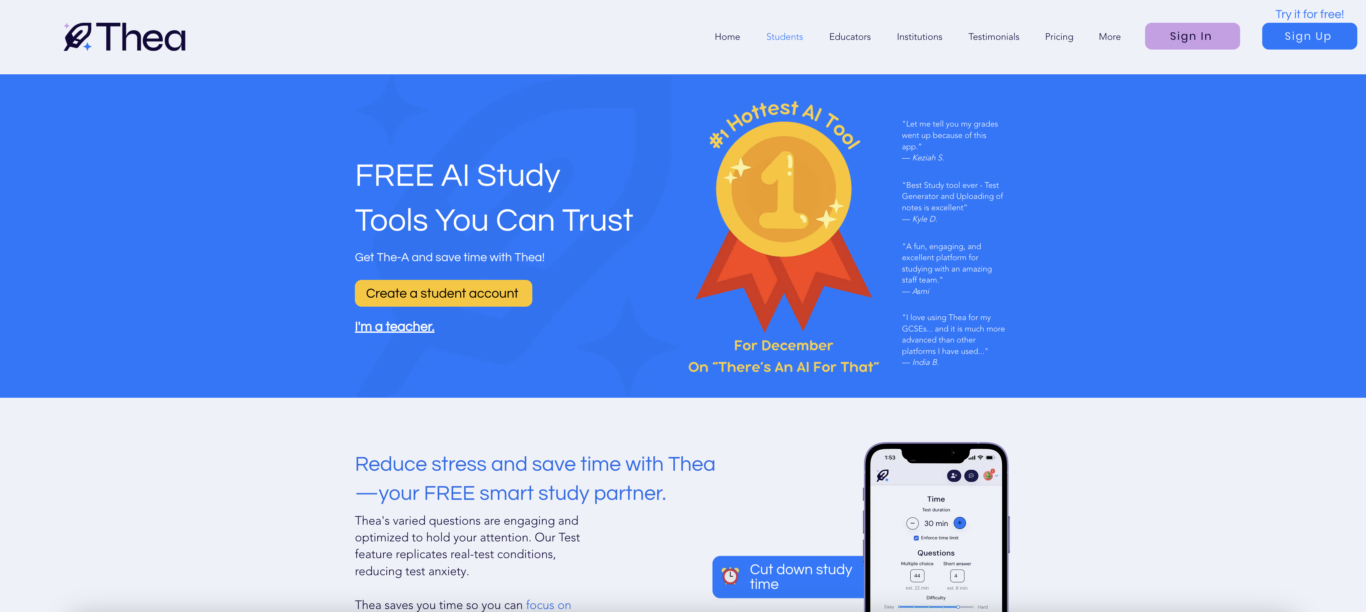"Unlocking EHR Efficiency: The Power of PDSQI-9 in Healthcare Workflows"
In the fast-paced world of healthcare, where every second counts and efficiency is paramount, many professionals find themselves grappling with the complexities of Electronic Health Records (EHR). Are you tired of navigating cumbersome workflows that hinder patient care? Do you wish there was a way to streamline processes without sacrificing quality? Enter PDSQI-9—a powerful tool designed to revolutionize EHR efficiency. In this blog post, we will delve into what PDSQI-9 is and how it can transform your healthcare workflow from chaotic to cohesive. Imagine reducing administrative burdens while enhancing patient outcomes; that's not just a dream but an achievable reality with the right strategies in place. We’ll explore real-world applications that demonstrate its effectiveness, address common challenges faced during implementation, and offer practical solutions for overcoming these hurdles. Plus, we'll look ahead at future trends in EHR optimization that could redefine how we approach patient data management. Join us on this journey as we unlock the potential of PDSQI-9—your key to mastering EHR efficiency! Understanding EHR Efficiency Electronic Health Records (EHR) efficiency is paramount in modern healthcare, as it directly impacts patient care and administrative workflows. The integration of Large Language Models (LLMs) into EHR systems has the potential to enhance documentation processes significantly. However, to ensure that these models operate effectively within clinical settings, validated evaluation instruments like the Provider Documentation Summarization Quality Instrument (PDSQI-9) are essential. This instrument assesses various aspects of LLM performance, including accuracy and organization of patient notes. By employing rigorous validation methods such as factor analysis and training raters for consistent application, healthcare providers can better understand how well LLMs summarize complex medical information. Importance of Validated Instruments The necessity for validated tools stems from the increasing volume of data generated in EHRs which poses challenges for healthcare professionals tasked with extracting meaningful insights quickly. Existing evaluation instruments often fall short in addressing specific needs related to summarization quality; hence PDSQI-9 serves a critical role by providing structured metrics for assessing LLM outputs against real-world scenarios. Its structural validity ensures that key attributes like clarity and neutrality are maintained during communication among healthcare teams, ultimately leading to improved decision-making processes and enhanced patient outcomes. What is PDSQI-9? The Provider Documentation Summarization Quality Instrument (PDSQI-9) is a validated tool designed to assess the quality of summaries generated by Large Language Models (LLMs) within electronic health record (EHR) systems. This instrument was developed through rigorous validation processes, ensuring its reliability in evaluating various aspects such as accuracy, organization, and clarity of LLM-generated patient notes. The study utilized real-world EHR data and involved training raters to apply the PDSQI-9 consistently across different models. Factor analysis played a crucial role in establishing structural validity, highlighting how well the instrument captures essential attributes necessary for effective communication in healthcare settings. Key Features of PDSQI-9 The PDSQI-9 focuses on several critical dimensions: accuracy ensures that information reflects true patient conditions; organization assesses how well information flows logically; and usefulness evaluates whether summaries meet clinical needs. By addressing these factors, the instrument aims to enhance documentation practices while alleviating challenges faced by healthcare providers due to increasing note volumes in EHRs. Ultimately, it serves as an essential resource for improving both provider efficiency and patient care outcomes through better summarization techniques integrated into existing workflows. Benefits of Implementing PDSQI-9 Implementing the Provider Documentation Summarization Quality Instrument (PDSQI-9) offers numerous advantages for healthcare providers and electronic health record (EHR) systems. Firstly, it enhances the evaluation of Large Language Models (LLMs), ensuring that patient notes are accurately summarized, which is crucial in clinical decision-making. The validated nature of PDSQI-9 promotes consistency across evaluations by providing a standardized framework, thus reducing variability among raters. Furthermore, its structural validity allows for comprehensive assessments regarding accuracy, organization, clarity, and neutrality—key attributes necessary for effective communication within healthcare settings. Improved Workflow Efficiency By integrating PDSQI-9 into EHR workflows, healthcare professionals can streamline documentation processes significantly. This instrument ai

In the fast-paced world of healthcare, where every second counts and efficiency is paramount, many professionals find themselves grappling with the complexities of Electronic Health Records (EHR). Are you tired of navigating cumbersome workflows that hinder patient care? Do you wish there was a way to streamline processes without sacrificing quality? Enter PDSQI-9—a powerful tool designed to revolutionize EHR efficiency. In this blog post, we will delve into what PDSQI-9 is and how it can transform your healthcare workflow from chaotic to cohesive. Imagine reducing administrative burdens while enhancing patient outcomes; that's not just a dream but an achievable reality with the right strategies in place. We’ll explore real-world applications that demonstrate its effectiveness, address common challenges faced during implementation, and offer practical solutions for overcoming these hurdles. Plus, we'll look ahead at future trends in EHR optimization that could redefine how we approach patient data management. Join us on this journey as we unlock the potential of PDSQI-9—your key to mastering EHR efficiency!
Understanding EHR Efficiency
Electronic Health Records (EHR) efficiency is paramount in modern healthcare, as it directly impacts patient care and administrative workflows. The integration of Large Language Models (LLMs) into EHR systems has the potential to enhance documentation processes significantly. However, to ensure that these models operate effectively within clinical settings, validated evaluation instruments like the Provider Documentation Summarization Quality Instrument (PDSQI-9) are essential. This instrument assesses various aspects of LLM performance, including accuracy and organization of patient notes. By employing rigorous validation methods such as factor analysis and training raters for consistent application, healthcare providers can better understand how well LLMs summarize complex medical information.
Importance of Validated Instruments
The necessity for validated tools stems from the increasing volume of data generated in EHRs which poses challenges for healthcare professionals tasked with extracting meaningful insights quickly. Existing evaluation instruments often fall short in addressing specific needs related to summarization quality; hence PDSQI-9 serves a critical role by providing structured metrics for assessing LLM outputs against real-world scenarios. Its structural validity ensures that key attributes like clarity and neutrality are maintained during communication among healthcare teams, ultimately leading to improved decision-making processes and enhanced patient outcomes.
What is PDSQI-9?
The Provider Documentation Summarization Quality Instrument (PDSQI-9) is a validated tool designed to assess the quality of summaries generated by Large Language Models (LLMs) within electronic health record (EHR) systems. This instrument was developed through rigorous validation processes, ensuring its reliability in evaluating various aspects such as accuracy, organization, and clarity of LLM-generated patient notes. The study utilized real-world EHR data and involved training raters to apply the PDSQI-9 consistently across different models. Factor analysis played a crucial role in establishing structural validity, highlighting how well the instrument captures essential attributes necessary for effective communication in healthcare settings.
Key Features of PDSQI-9
The PDSQI-9 focuses on several critical dimensions: accuracy ensures that information reflects true patient conditions; organization assesses how well information flows logically; and usefulness evaluates whether summaries meet clinical needs. By addressing these factors, the instrument aims to enhance documentation practices while alleviating challenges faced by healthcare providers due to increasing note volumes in EHRs. Ultimately, it serves as an essential resource for improving both provider efficiency and patient care outcomes through better summarization techniques integrated into existing workflows.
Benefits of Implementing PDSQI-9
Implementing the Provider Documentation Summarization Quality Instrument (PDSQI-9) offers numerous advantages for healthcare providers and electronic health record (EHR) systems. Firstly, it enhances the evaluation of Large Language Models (LLMs), ensuring that patient notes are accurately summarized, which is crucial in clinical decision-making. The validated nature of PDSQI-9 promotes consistency across evaluations by providing a standardized framework, thus reducing variability among raters. Furthermore, its structural validity allows for comprehensive assessments regarding accuracy, organization, clarity, and neutrality—key attributes necessary for effective communication within healthcare settings.
Improved Workflow Efficiency
By integrating PDSQI-9 into EHR workflows, healthcare professionals can streamline documentation processes significantly. This instrument aids in identifying areas where LLMs excel or require improvement in summarizing patient information efficiently. Consequently, this leads to reduced clinician burnout as they spend less time sifting through extensive notes and more time focusing on patient care. Additionally, accurate summaries generated by LLMs foster better interdisciplinary collaboration by ensuring all team members have access to clear and concise information about patients' conditions and treatment plans.
Enhanced Patient Care Quality
The implementation of PDSQI-9 ultimately contributes to improved quality of care delivered to patients. With precise documentation facilitated by validated instruments like PDSQI-9, clinicians can make informed decisions based on reliable data interpretations from EHRs. This not only enhances diagnostic accuracy but also supports personalized treatment strategies tailored to individual patient needs.
Real-world Applications in Healthcare Workflows
The integration of the Provider Documentation Summarization Quality Instrument (PDSQI-9) into electronic health record (EHR) workflows has significant implications for healthcare efficiency. By evaluating Large Language Models (LLMs), PDSQI-9 enhances the accuracy and relevance of patient documentation, which is crucial given the increasing volume of notes that clinicians must manage. The validation methods employed, including factor analysis, ensure that this instrument effectively assesses various dimensions such as clarity and organization within EHRs. Furthermore, trained raters apply consistent evaluation criteria to maintain high standards across different LLM outputs.
Key Findings and Implications
One notable finding from studies utilizing PDSQI-9 is its ability to differentiate between extractive and abstractive summarization techniques. This distinction aids healthcare providers in selecting appropriate models based on their specific needs—whether they require concise summaries or detailed narratives. Additionally, insights gained from using real-world EHR data can inform future enhancements to LLMs, ensuring they align with clinical requirements while improving overall workflow efficiency. As a result, implementing validated instruments like PDSQI-9 not only streamlines documentation processes but also contributes significantly to improved patient care outcomes by facilitating better communication among healthcare professionals.
Challenges and Solutions for Adoption
Adopting the Provider Documentation Summarization Quality Instrument (PDSQI-9) within electronic health record (EHR) workflows presents several challenges. One significant hurdle is the resistance to change among healthcare providers accustomed to traditional documentation methods. Additionally, integrating PDSQI-9 into existing systems requires substantial training and adjustment periods for staff, which can disrupt workflow efficiency temporarily. Furthermore, ensuring consistent application of the instrument necessitates comprehensive training programs for raters to maintain reliability in evaluations.
Addressing Resistance and Training Needs
To mitigate these challenges, it’s essential to engage stakeholders early in the adoption process by demonstrating how PDSQI-9 enhances patient care through improved documentation quality. Providing ongoing support and resources during implementation can also ease transitions. Moreover, developing structured training modules that emphasize practical applications of PDSQI-9 will empower users with confidence in utilizing this tool effectively while fostering a culture of continuous improvement in EHR practices. By addressing these concerns proactively, healthcare organizations can facilitate smoother integration of validated instruments like PDSQI-9 into their workflows.
Future Trends in EHR Optimization
The integration of Large Language Models (LLMs) into Electronic Health Records (EHRs) is set to revolutionize healthcare documentation. One significant trend is the development and validation of tools like the Provider Documentation Summarization Quality Instrument (PDSQI-9), which assesses LLM performance within EHR workflows. This instrument ensures that summaries generated by LLMs are accurate, organized, and useful for clinical decision-making. The emphasis on validated instruments will drive improvements in data extraction processes, addressing challenges posed by increasing note volumes.
Key Innovations on the Horizon
As healthcare providers seek efficient ways to manage patient information, future trends will likely include enhanced training programs for raters using PDSQI-9 to ensure consistent evaluation standards across various settings. Additionally, factor analysis methods will be increasingly utilized to refine these instruments further, ensuring they meet evolving needs in real-world applications. With a focus on safety and ethical considerations through datasets like AEGIS 2.0, we can expect advancements that prioritize both effective communication and content moderation within EHR systems.
Incorporating user feedback loops into EHR optimization strategies could also emerge as a critical trend, allowing continuous improvement based on clinician experiences with LLM-generated summaries. As technology evolves alongside regulatory frameworks aimed at safeguarding patient data integrity and privacy, the landscape of EHR optimization promises not only efficiency but also enhanced quality of care delivery.
In conclusion, enhancing Electronic Health Record (EHR) efficiency is crucial for improving healthcare delivery and patient outcomes. The PDSQI-9 framework offers a structured approach to streamline workflows by focusing on nine key performance indicators that can significantly boost the effectiveness of EHR systems. By implementing PDSQI-9, healthcare organizations can experience numerous benefits, including reduced administrative burdens, improved data accuracy, and enhanced communication among care teams. Real-world applications demonstrate its potential in various settings, although challenges such as resistance to change and resource constraints may arise during adoption. Addressing these obstacles with targeted strategies will be essential for successful implementation. As we look toward the future of EHR optimization, embracing innovative trends like artificial intelligence and interoperability will further unlock efficiencies in healthcare workflows while ensuring high-quality patient care remains at the forefront of our efforts.
FAQs about Unlocking EHR Efficiency: The Power of PDSQI-9 in Healthcare Workflows
1. What is EHR efficiency and why is it important in healthcare?
EHR (Electronic Health Record) efficiency refers to the effectiveness and productivity with which healthcare providers can manage patient information using electronic systems. It is crucial because improved EHR efficiency leads to better patient care, reduced administrative burdens, enhanced data accuracy, and overall streamlined workflows within healthcare settings.
2. What does PDSQI-9 stand for and what role does it play in EHR systems?
PDSQI-9 stands for Patient Data Standardization Quality Indicator - 9. It serves as a framework designed to enhance the quality of data captured within EHRs by standardizing key metrics related to patient information management. This helps ensure consistency, reliability, and usability of health data across different platforms.
3. What are some benefits of implementing PDSQI-9 in healthcare workflows?
Implementing PDSQI-9 can lead to several benefits including: - Improved accuracy and completeness of patient records. - Enhanced interoperability between different health IT systems. - Streamlined clinical decision-making processes. - Increased provider satisfaction due to reduced time spent on documentation tasks.
4. Can you provide examples of real-world applications of PDSQI-9 in healthcare?
Real-world applications include hospitals utilizing PDSQI-9 standards for integrating various departmental databases into a cohesive system that allows seamless access to patient histories or clinics employing these indicators during telehealth consultations to ensure comprehensive assessments based on standardized data inputs.
5. What challenges might organizations face when adopting PDSQI-9, and how can they be addressed?
Organizations may encounter challenges such as resistance from staff accustomed to existing workflows or technical difficulties during integration with current systems. To address these issues, training programs should be implemented alongside clear communication regarding the benefits of adoption; additionally, phased implementation strategies can help ease transitions while minimizing disruptions in daily operations.




















